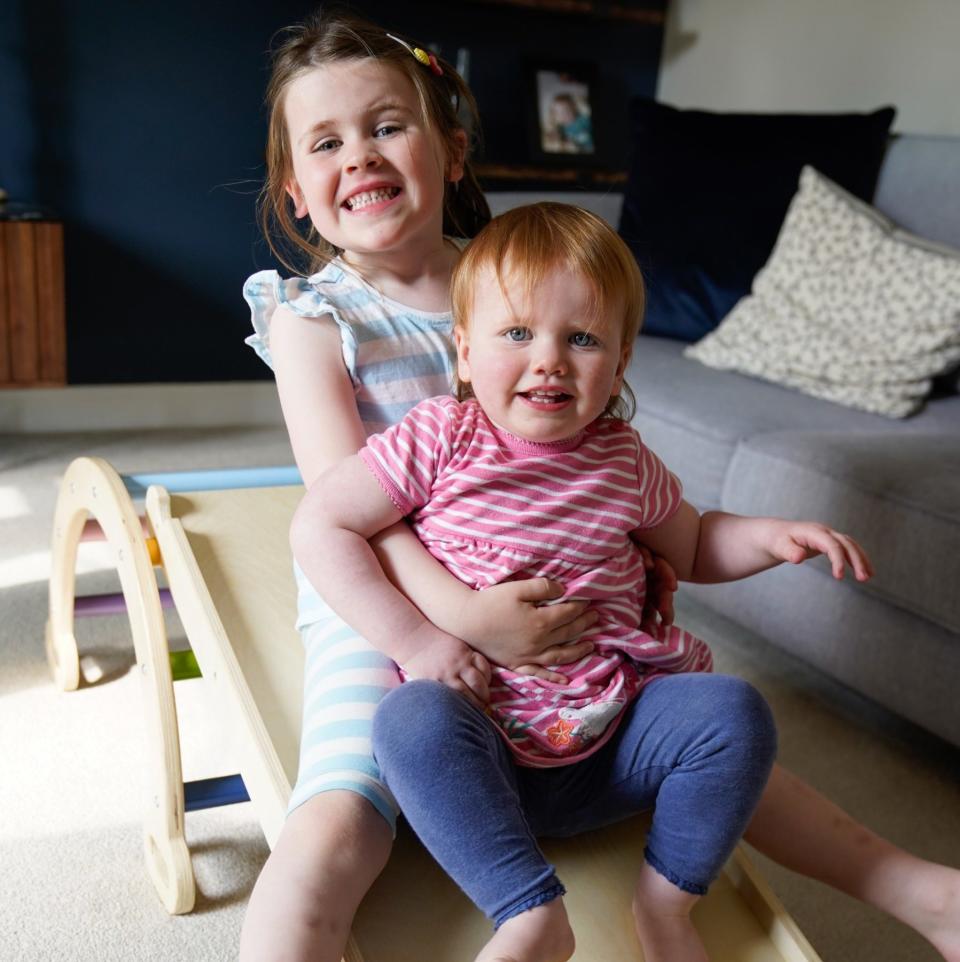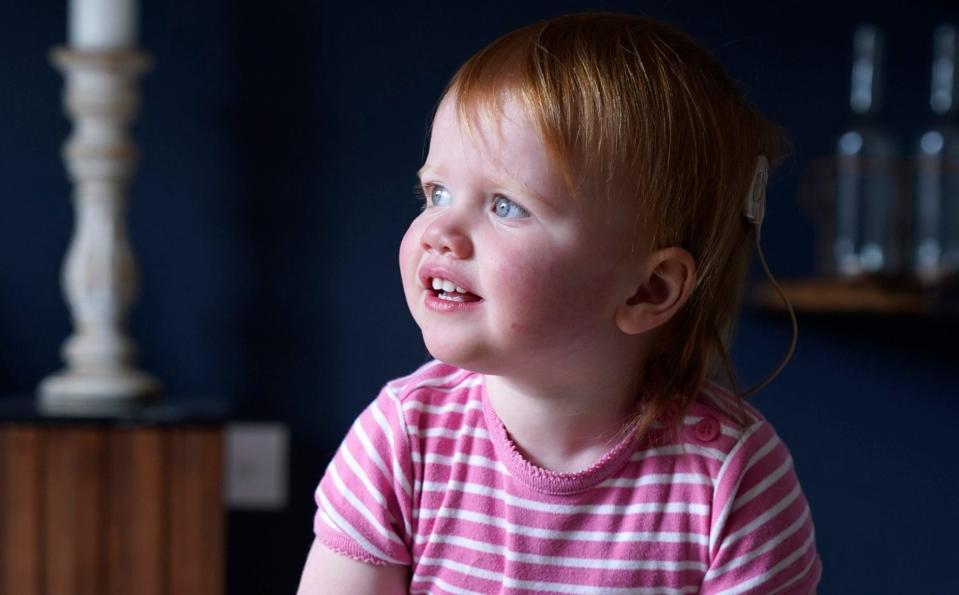A hearing-impaired toddler can now hear after becoming the first patient in the world to receive a new gene therapy.
Opal Sandy, an 18-month-old girl from Oxfordshire, was born with a genetic form of a condition called auditory neuropathy, which disrupts nerve impulses from the inner ear to the brain and prevents the processing of sound.
In September, he became the first person in the world to receive gene replacement therapy as part of a global study, and experts are excited about the “potential cure” for the condition.
Opal, like her five-year-old sister Nora, was born with a faulty version of the OTOF gene, which carries instructions for producing a neurotransmitter that allows the ear to communicate with the brain. Malfunction causes severe hearing loss.

Nora’s diagnosis meant Opal was eligible for genetic testing on the NHS, which found she too carried the faulty gene. This condition was not detected by newborn screening tests in either child.
While Nora had a cochlear implant in both ears, the current gold standard treatment, Opal was able to participate in the gene therapy trial but also had an implant in one ear as a safety precaution.
The gene therapy, called DB-OTO and produced by Regeneron, works by replacing the faulty gene with a working version. It is administered by a single injection of a modified, harmless virus carrying new genetic material.
The treatment means the ear’s sensory cells can produce a vital protein called otoferlin, which is needed for tiny hair cells in the ear to transmit signals to the brain.
Opal’s parents, Jo and James Sandy, noticed improvements after just three weeks and things have only gotten better since then. Opal’s doctors say her hearing is now “almost normal for her age” but progress will become clearer as she learns to speak.
Geography teacher Jo Sandy, 33, said it was “crazy” how quickly her daughter started hearing.
“We were in a routine of testing pretty loud sounds like banging, clapping, wooden spoons being scraped into pots, and those kinds of really intermittent loud sounds,” he said.


“I was testing this with his implant in and I didn’t realize his implant was actually coming out and he started clapping pretty loud. I couldn’t believe it when he first came back.”
“I thought it was a coincidence, a change in the light or something catching his eye, but I repeated it several times. I was absolutely stunned.
Opal, who had her surgery at Addenbrooke’s Hospital in Cambridge, is one of 18 children who will participate in the experiment carried out in England, the USA and Spain.
While a low dose will be given to Opal’s one ear, higher doses will be given to the others’ other ear. Some children may need treatment in both ears before receiving further evidence that it is safe.
Professor Manohar Bance, an ear surgeon at Cambridge University Hospitals NHS Foundation Trust who led Addebnbrooke and the study’s principal investigator, said the results after 24 weeks were “better than I had hoped or expected”.
‘We hope it could be a potential treatment’
“We have results” [Opal] These are so magnificent; very close to normal hearing restoration. So we’re hopeful that this could be a potential treatment.
“In terms of being able to hear soft sounds (like a soft whisper), he has almost normal hearing for his age,” she said. “Because he’s so small, we don’t know if he understands speech the same way, but he can definitely respond to soft sounds.”
A second child also received gene therapy treatment at Cambridge University Hospitals; Positive results were seen six weeks after surgery; Other gene therapies for deafness are being tested in China and the USA.
Prof Bance estimates that around 20,000 people in the US, Germany, France, Italy, Spain and the UK have auditory neuropathy due to OTOF mutations.
Martin McLean, senior policy advisor at the National Deaf Children’s Association, said: “This trial will teach us more about the effectiveness of gene therapy in cases where deafness has a specific genetic cause.
“We would like to emphasize that with the right support from the start, deafness should never be a barrier to happiness or fulfillment.”
Sisters ‘competing to make the most noise’
Miss Sandy said Opal had started talking in the last six weeks and now both her daughters like to “see who can make the loudest noise”.
“He’s very good at your first baby words, so ‘dad’ is your favorite word, ‘uh ah,’ ‘bye,'” she said.
“I’ve always said I never mind them being noisy, and I really do get annoyed by them being noisy,” Ms. Sandy joked.
“Opal likes to play with her little musical instrument set…playing the drums, playing her baby piano, banging on some of her wood blocks, things like that.
“Nora is very new to music and (Opal) likes to throw her arms up in the air and does little dances in the kitchen.
“So they like to dance together. Nora likes to read to him, they like to fight, they like to jump off the couch.”
Results of the Chord experiment were presented at the American Society for Gene and Cell Therapy conference in Baltimore, US, on Wednesday.